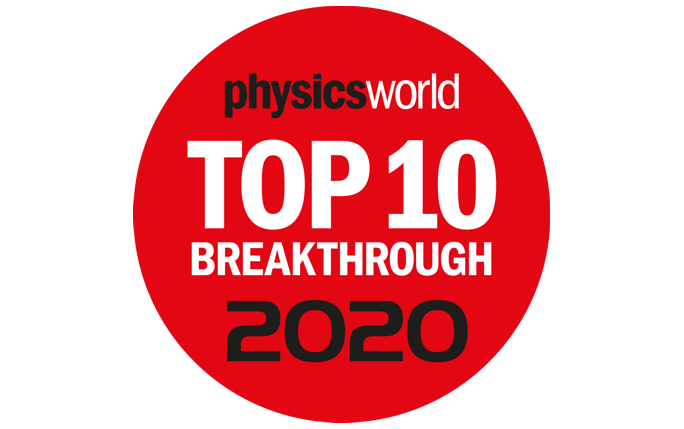Mixed particle beam project among top 10 for Physics Breakthrough of the Year award

Every year since 2009, ‘Physics World’, a magazine published by the Institute of Physics (IoP), awards the ‘Breakthrough of the Year’ prize to outstanding research in physics. This year, a collaboration project between OMA fellow Laurent Kelleter (UCL, London, UK, supervised by Simon Jolly) and Lennart Volz (DKFZ, Heidelberg, Germany, supervised by Joao Seco) has been selected among the 10 finalists for the award. The project was previously featured in an article in Physics World and the OMA newsletter
The aim of the project is to simultaneously use a carbon-ion beam for treatment and a helium-ion beam for imaging (theranostics). This is done by exploiting the 3x longer range of helium ions compared to carbon ions when accelerated to the same energy per nucleon. The residual helium beam is measured in a detector behind the patient, enabling the online monitoring of intra-fractional movements. The employed detector, which is based on a segmented plastic scintillator read out by a large-scale CMOS sensor, was developed in the frame of Laurent’s PhD thesis at UCL. Laurent and Lennart demonstrated in their study with sequentially irradiated ion beams the outstanding sensitivity of the method: beam range shifts of only 22% of the beam particles by just 1 mm could be detected. Moreover, using two anthropomorphic pelvis phantoms, they showed that prostate cancer patients could benefit from the technique.
In the future, it needs to be shown if the delivery of a mixed helium/carbon beam is technically feasible in a synchrotron. Challenges that need to be overcome before clinical implementation include the simultaneous pre-acceleration of the ions in the linac, the beam extraction from the synchrotron as well as the pencil beam scanning. The mixed-beam method could enjoy a boost with the potential future commercialisation of cyclotrons for carbon therapy.